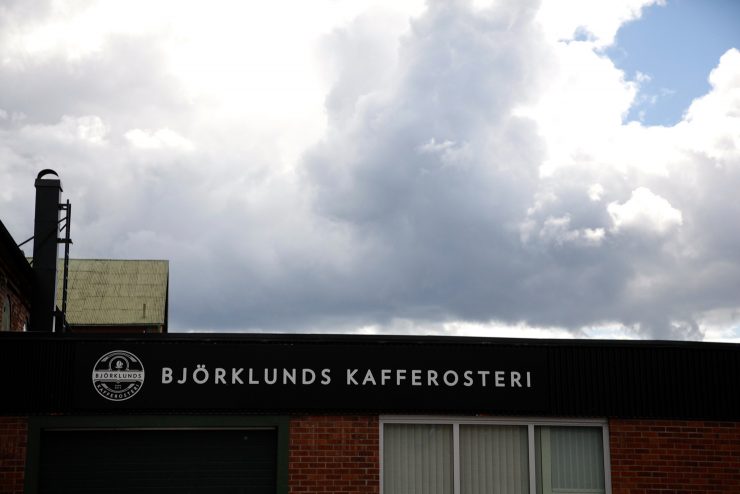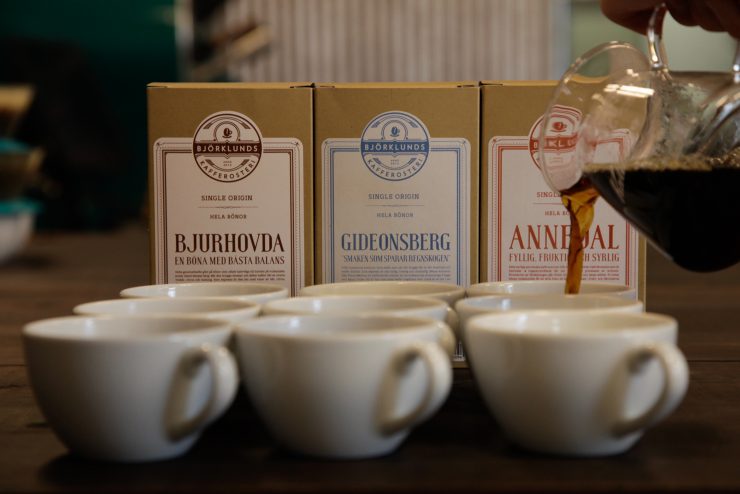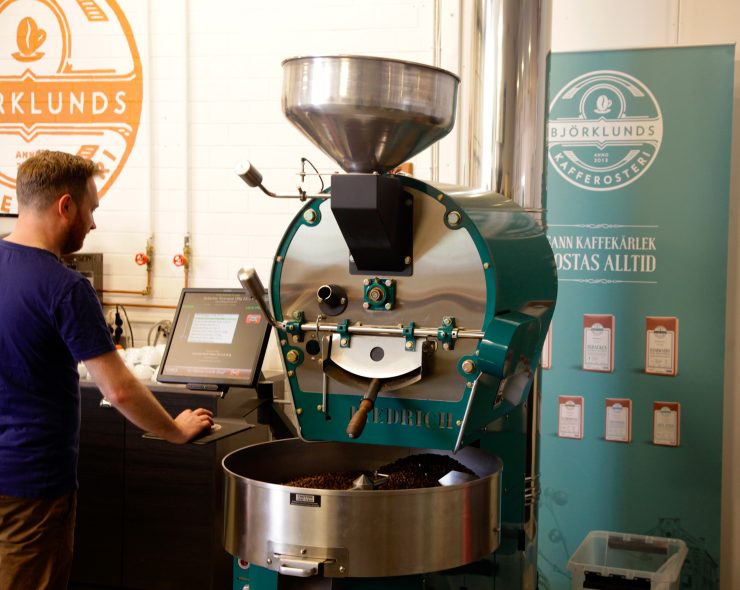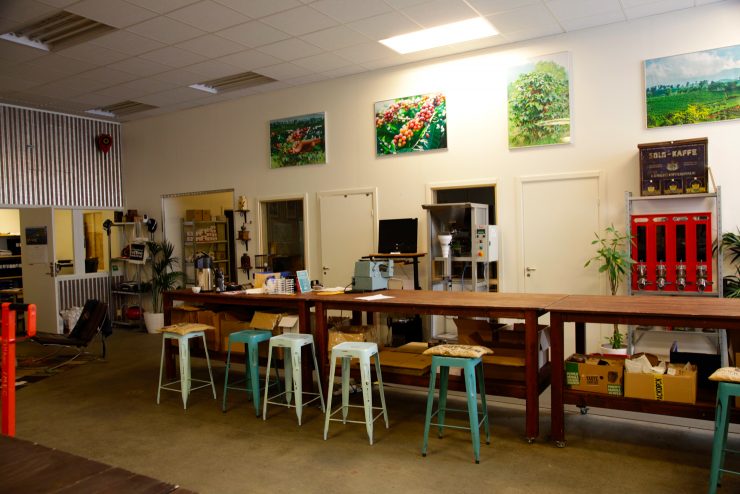Growing up in a Swedish-American family, I was indoctrinated with the understanding that Swedish coffee was above and beyond anything ever served in the United States.
Well before Scandinavian cuisine got trendy and the outside world was paying attention to what was happening up north, the Swedes, as well as the other Nordic countries, were drinking coffee, and a lot of it. Coffee has been the unofficial national drink of Sweden for decades. My grandparents lived in Karlstad, home to one of Sweden’s largest roasting companies, Löfbergs. Every time we went to visit, there was a slight scent of roasted coffee hanging in the air as you walked past the company’s headquarters. Coffee wasn’t just in the cup in front of you, it was in the air around you.
Västerås, a city about an hour west of Stockholm, has a similar history with coffee, the drink is not only a big part of local culture, but a crucial part of business as well. In fact, the city has a long history with coffee; the city’s first roastery was opened in 1918, and one of the city’s main brands of coffee—Luxus—eventually became the in-house coffee brand of the national grocery chain ICA.
But the roastery behind Luxus shut down in 1992, leaving what was once a coffee city without a local roasting culture. Until 2013.
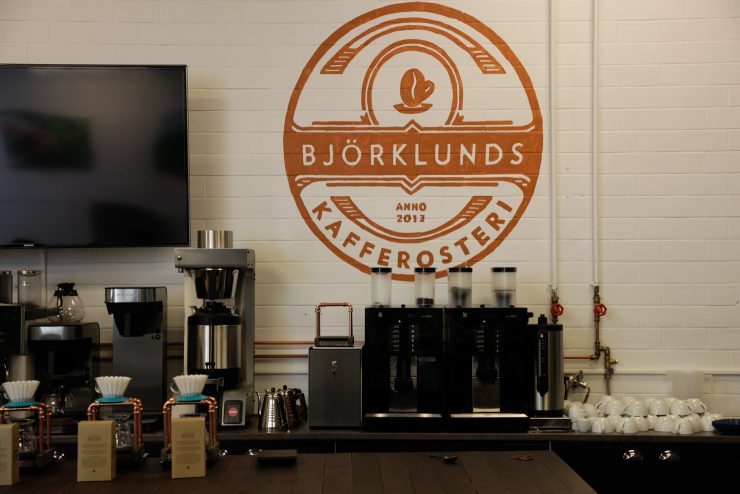
That’s the year that Johan Björklund launched his roasting company, Björklunds Kafferosteri, in an attempt to not only revive the city’s lost coffee culture, but ensure that his fellow Swedes were drinking a better quality cup.
Björklund came from the food world, working as a chef for many years. The opportunity to open a coffee roasting company arose, and he jumped at it. “I want to be local,” says Björklund. He didn’t just want to roast coffee, he wanted to open “a roastery for the people in Västerås.”
Not only does he want to turn Västerås back into the “coffee city” it once was, but he also wants to bring good quality coffee to his community. “In specialty coffee, we haven’t come as far as other places,” says Björklund, highlighting that in Sweden since the base level of coffee in Sweden was of fairly decent quality, better than in many other countries, Swedes weren’t forced to evolve their coffee culture like in other places.
The roastery itself is set up in an old slaughterhouse building, which has today been turned into a building full of food entrepreneurs. In Saluhallen Slakteriet, there’s a fishmonger, a butcher, a woman selling local produce, a specialty coffee and tea boutique, and even a restaurant where you can come for a typical Swedish lunch.
The roastery itself is housed in the part of the building where sausages were made. Björklund looks out the window and across the courtyard. “That’s where the live animals were held before they brought them over,” he says, pointing to the building.
Nowadays however, there are no sausages to be found, only bags of beans and a Diedrich roaster. Björklund also has a beautiful setup for making coffee, with handmade pour-over systems made by Gothenburg-based Linnéus.
Working with importers like Café Imports and 32Cup, Björklund is focusing on roasting high-quality coffees that work well for the Swedish palate. That means that while he has some coffees that are more aligned with the current specialty coffee world’s tastes, a lot of his coffees are darker, heavier roasts. As Björklund puts it, he is trying to be “both in the specialty coffee industry and in the everyday.”
That means that he has two types of packaging. One is a traditional 250-gram box, what a specialty coffee lover would be used to finding. The other is a 500-gram box, the exact same size a more industrial Swedish coffee like Gevalia would be sold in, available in both whole bean and ground. The idea is to have something on the supermarket shelf that looks and feels exactly like what the average Swede is buying, but is of higher quality. “The Swedes take the same coffee every time they go to the store,” says Björklund. And that means that in terms of what they are used to drinking, “the coffee tastes the same every time.” In other words, when the average Swede buys coffee at the supermarket, they are expecting a certain taste, so before jumping into the specialty coffee world, they need something that falls somewhere in between. A gateway coffee drug, so to say.
While his coffees sell for double the price as his industrial counterparts, Björklund believes that consumers are ready to pay for something of higher quality. “If you can buy quality tenderloin at ICA, why can’t you buy a single-origin coffee?” Björklund asks, pointing out that grocery stores have a role to play in offering customers high-quality products.
This policy of having one foot in the specialty world and one foot in the average consumer world, however, has gotten him some critique. “I get a little shit for this from the specialty coffee industry,” says Björklund. “But they are also interested”—interested in what he is doing to bridge the two worlds. As independent coffee companies are trying to figure out how to make their businesses viable, finding a balance between the two might just be the trick to running a successful enterprise and continuing to build a consumer base.
All of Björklund’s coffees are rated above 82, and he is the first specialty coffee roaster to sell at supermarkets in Sweden. His branding is focused on pulling in the customer, but also educating them. His coffees are named after areas in and around Västerås, so that “they see directly that this is a local product.” On each box, there is also information about the coffee, where it’s from and what it tastes like. “You can’t expect that people are going to know [about specialty coffee],” says Björklund. Packaging and selling in this way allows him to have a part in educating the general public about what better-quality coffee is. Björklund has also been working with local restaurants, helping them to not only serve better coffee but also working with them to ensure that they have the right set up on site. While we were talking, an Eversys was delivered, which would be sent out later that day to a local restaurant.
Ultimately, while Björklund has been bitten by the coffee bug, he’s more about listening to what his customers want than telling them what they should be drinking. “Should I make a coffee that I love or one that the consumer loves?” Björklund asks. “I can roast for us, but then who is going to buy it?” As a businessman, that’s a question that’s certainly worth asking, and in a culture that’s sometimes slow to warm up to change, that might be just the right policy for getting everyday Swedes to drink an even better cup.
Anna Brones (@annabrones) is a Sprudge.com staff writer based in Paris, the founder of Foodie Underground, and the co-author of Fika: The Art Of The Swedish Coffee Break, available now from Ten Speed Press. Read more Anna Brones on Sprudge.
The post In Sweden, Reviving A City’s Lost Coffee Culture At Bjorklund’s Kafferosteri appeared first on Sprudge.


